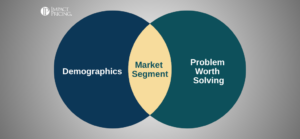You can listen to the full audio version of this blog we call — Blogcast.
There are only two ways to increase your revenue (and profit): win more customers and grow your current customers so they give you more money. That’s it. Many high-growth companies focus on both of these, WIN and GROW.
Buyers trade money for value. They only give you money when they believe they are getting more value than the price. If you want more buyers to pay you more money, your buyers must perceive more value. So, what is value?
Value is an ambiguous word, but let’s focus on B2B markets where value is less ambiguous. One definition, which we will use throughout this article, is that value is the incremental profit a company will make when they buy and use your product. The B2C world is less quantifiable, but replace the word profit with desire and you have a decent approximation. This article will use profit in the B2B world.
How do you WIN new customers? First, realize these customers only use perceptions. They don’t have actual experience with your product. This means you must communicate your value through marketing and sales. Value is profit, but you can’t just tell a buyer they will make more money. You have to show them how. But here’s a big hint. Talking about your features rarely shows a new buyer how they will make more profit. Instead, talk about the problems you solve and the results they should expect.
Second, realize that these customers typically make two decisions: “Will I?” and “Which One?” When they are making the Will I decision they want to know if the profit they will make solving the problem is significantly greater than your price. When they make the Which One decision they want to know if the ROI from your product is better than the ROI from competitive alternatives.
This means you must be able to communicate both Inherent Value and Relative Value. Inherent Value is the value of solving the problem. Relative Value is the value of your product relative to your competitors. You typically determine Relative Value by looking at the value of your differentiating capabilities.
To WIN customers effectively, you need to learn how and when to communicate both inherent value and relative value.
How do you GROW existing customers? The good news is they already use your product. They know you deliver a ton of value. (You do, don’t you?) They are using actual Value as part of their decision process. You still need to be able to communicate the perceived value of any upgrades or cross-sells, but you start with a distinct advantage.
Also, existing customers may have high switching costs. They may like you enough that they don’t even look at competitive alternatives. In many situations, you only need to talk about Inherent Value. And the great news is when they don’t look at competitive alternatives, they are less price sensitive. You usually can charge more (discount less) to existing customers for upgrades.
Much of what is written above may seem obvious after you’ve thought about it. But what isn’t obvious is how much value you deliver. Without fail, every company I start working with doesn’t understand value from the perspective of their customer. After defining value this way, these companies become more effective at pricing, packaging, marketing, and selling.
How can you know if your company focuses on value? Look at your website. Does it talk about your product and features (like most websites)? If so, you aren’t communicating value. You are hoping people who go to your website can translate your features into their value. When your salespeople meet with customers are they pitching products? That’s not selling value. They should be asking questions to find problems they can solve and results they can deliver.
Buyers trade money for value. If you want more money, your buyers have to realize you deliver value. Different buyers perceive value differently. As you learn to communicate the right value to the right buyers, you will win more money from more customers.
Share your comments on the LinkedIn post.
Now go make an impact!
 Tags: pricing, value, value selling, value-based pricing
Tags: pricing, value, value selling, value-based pricing













